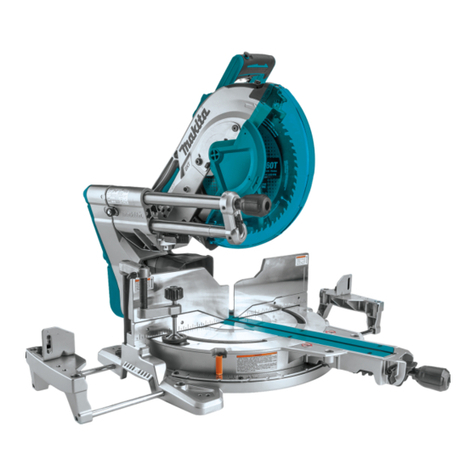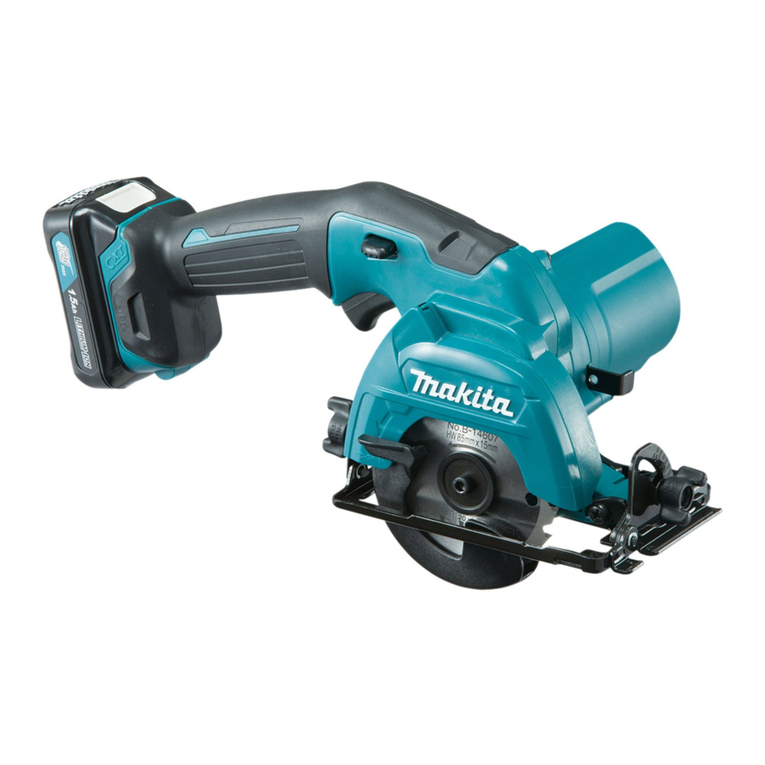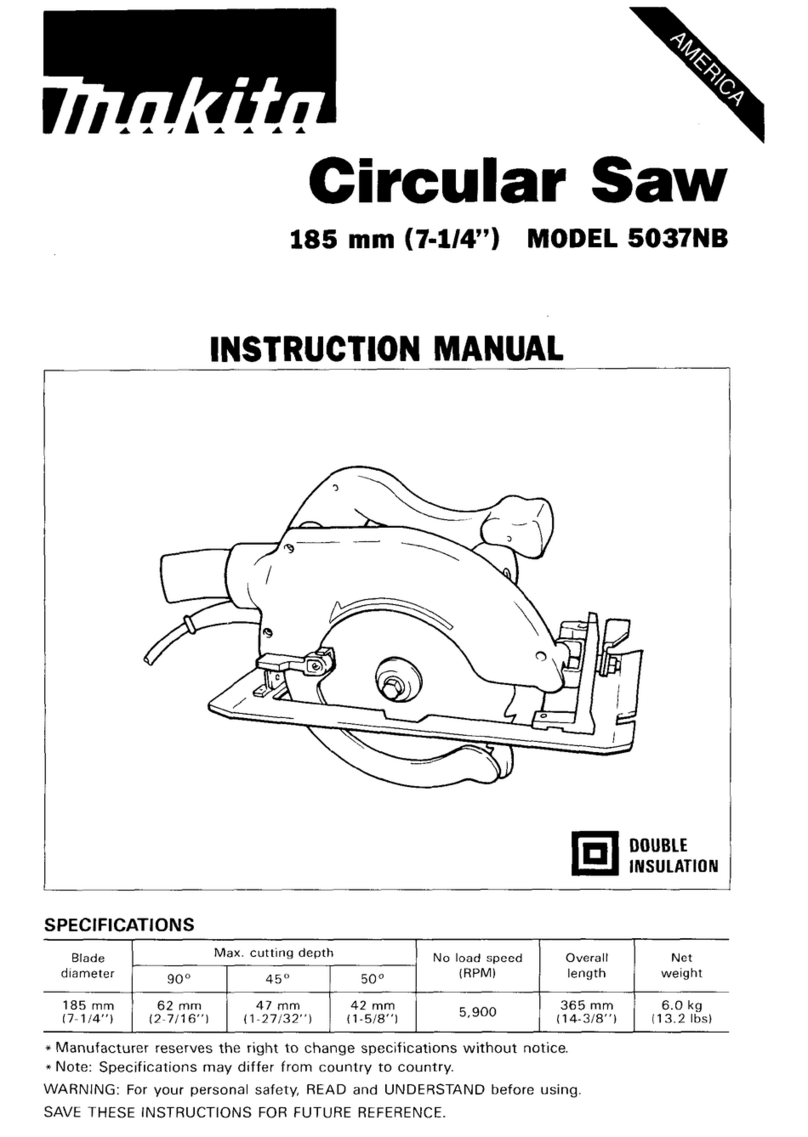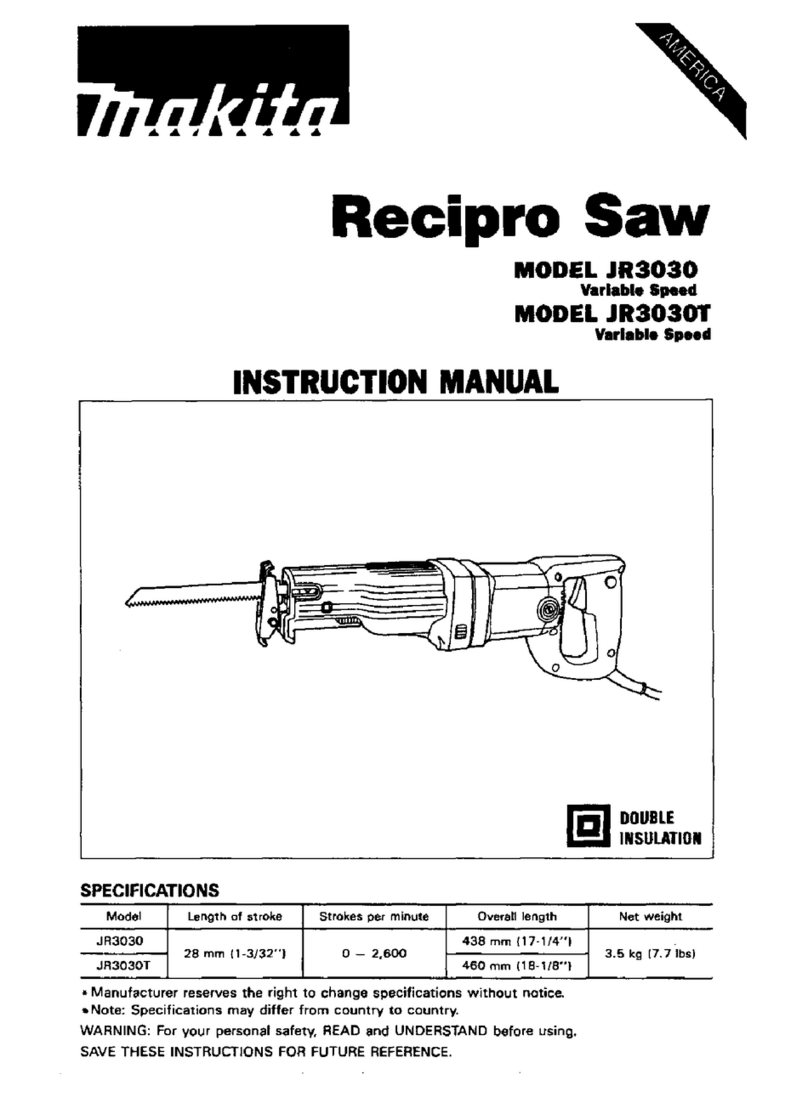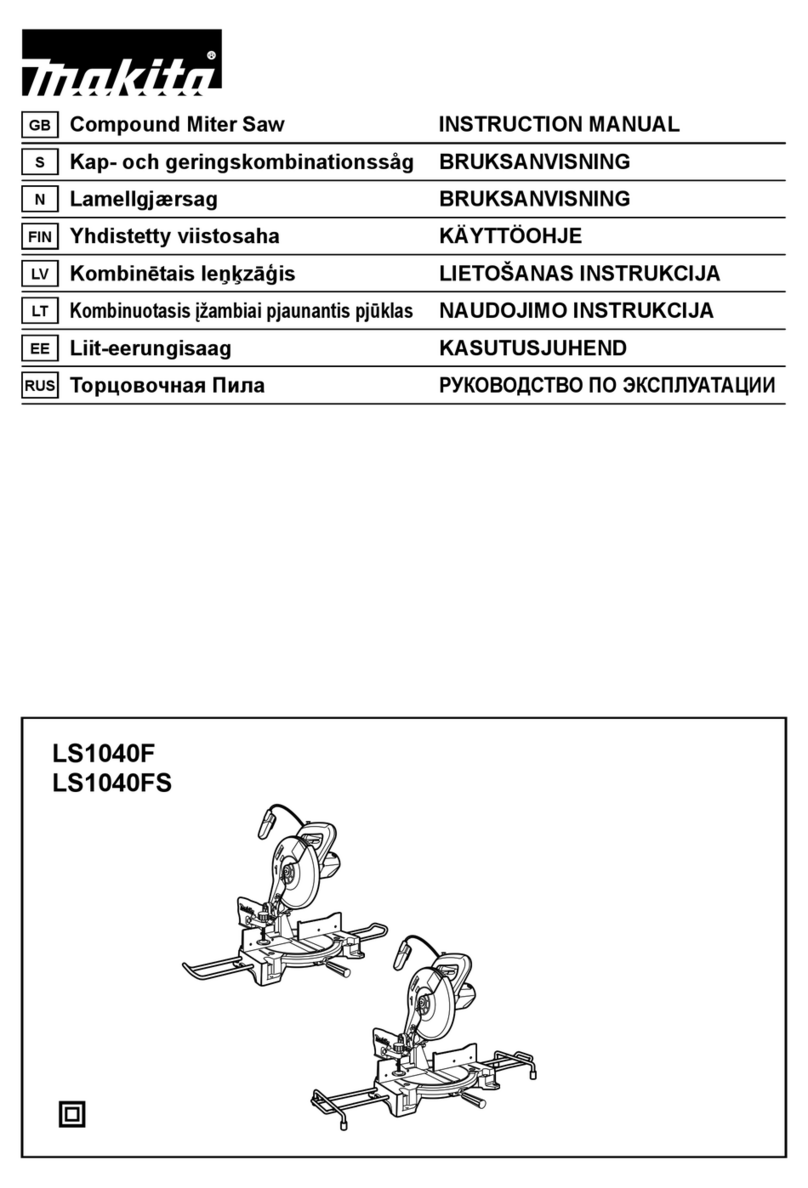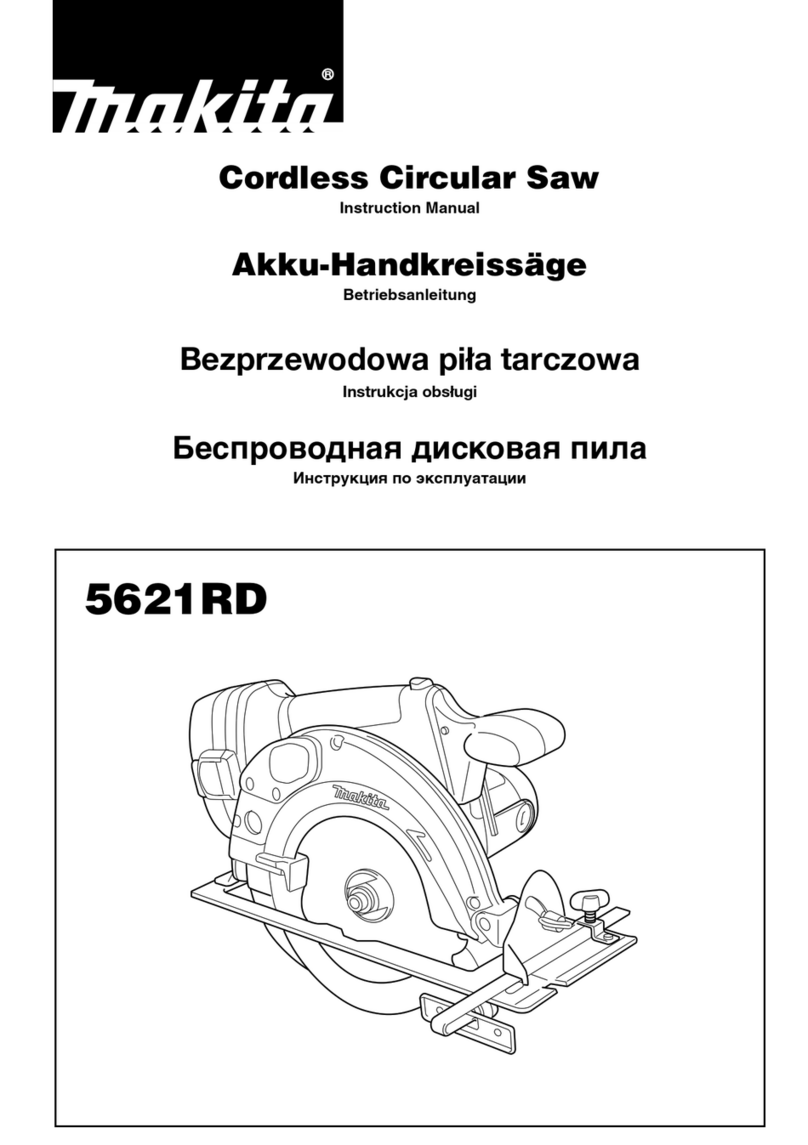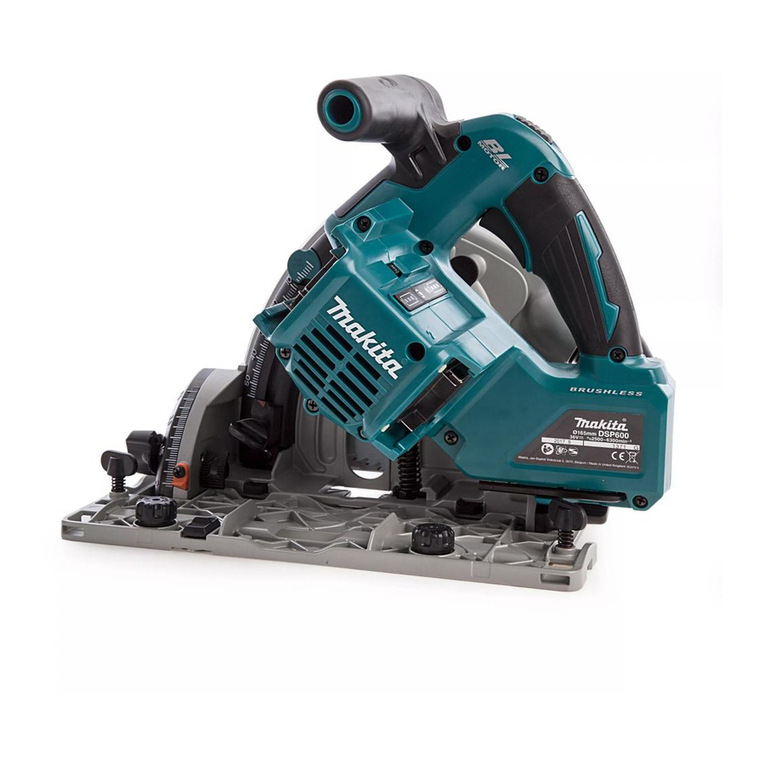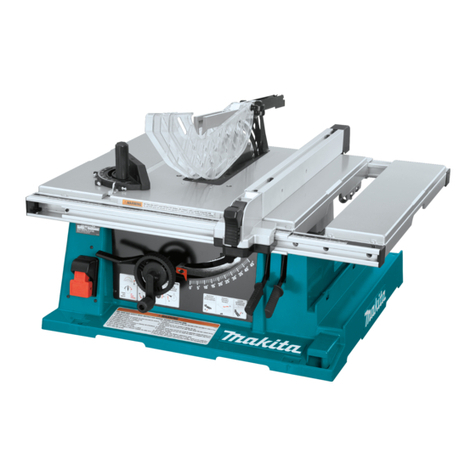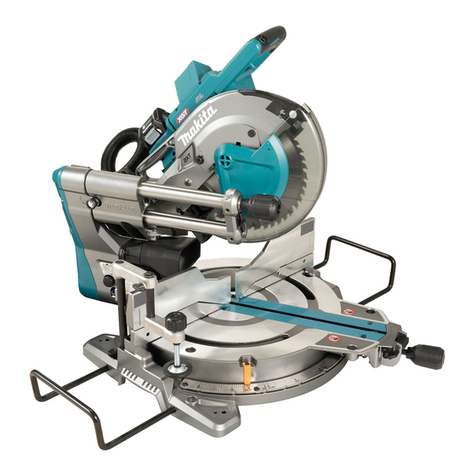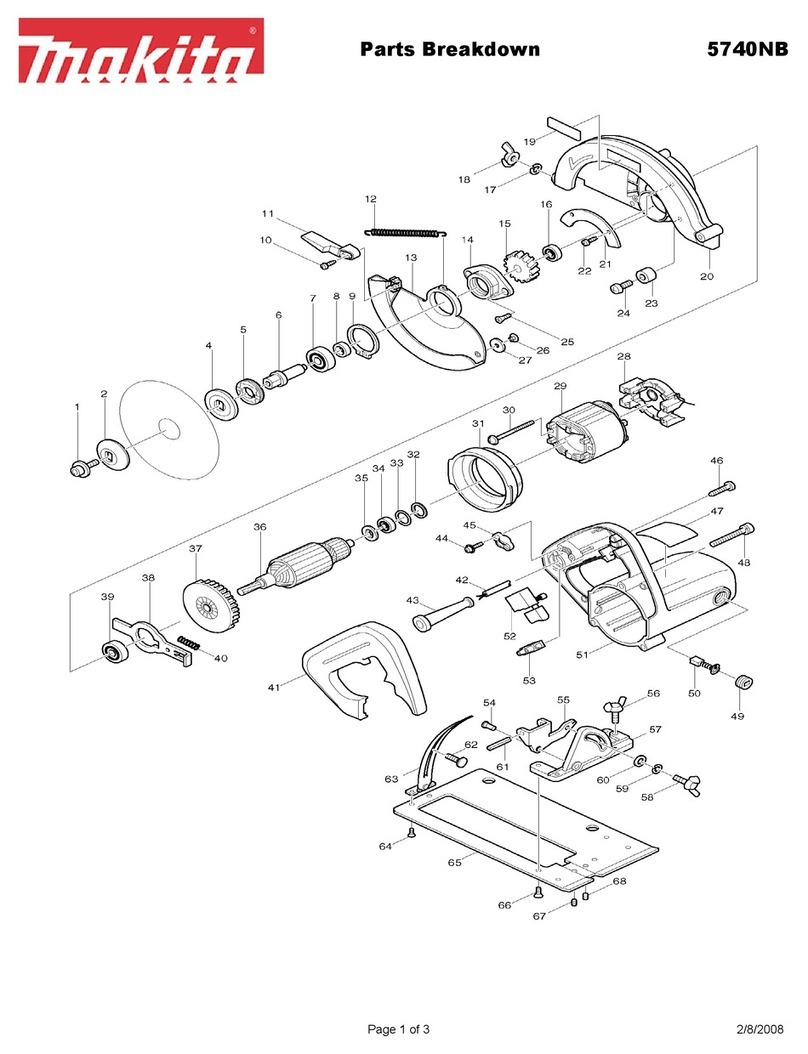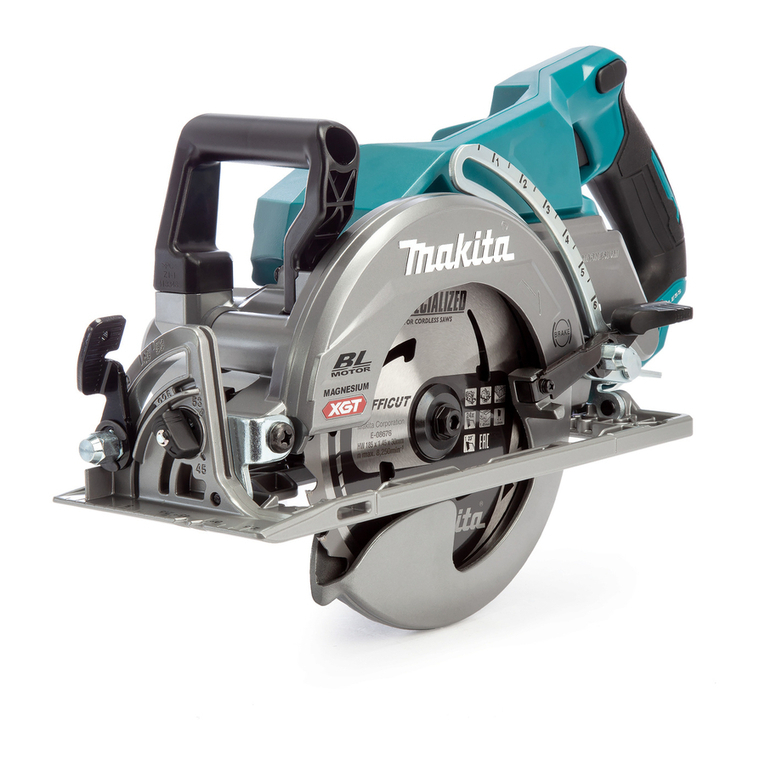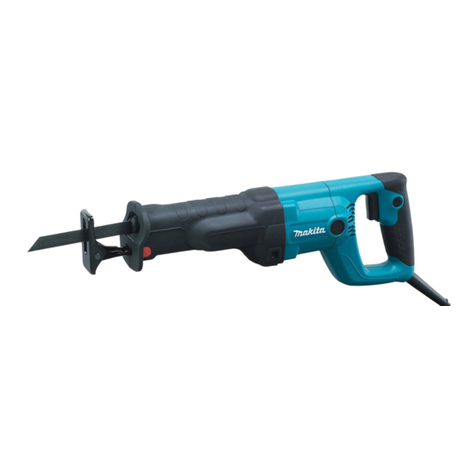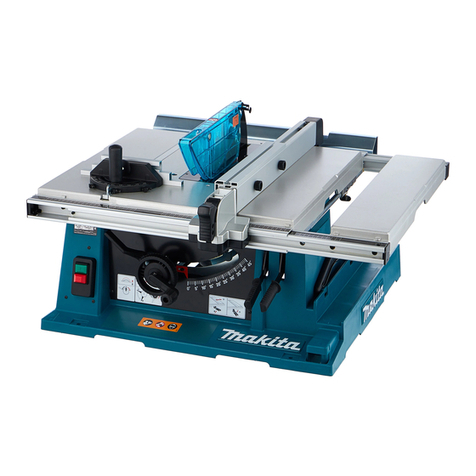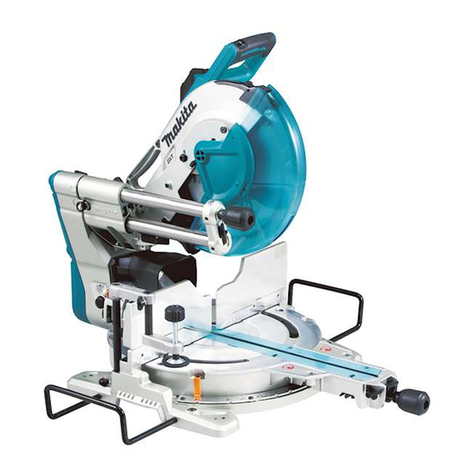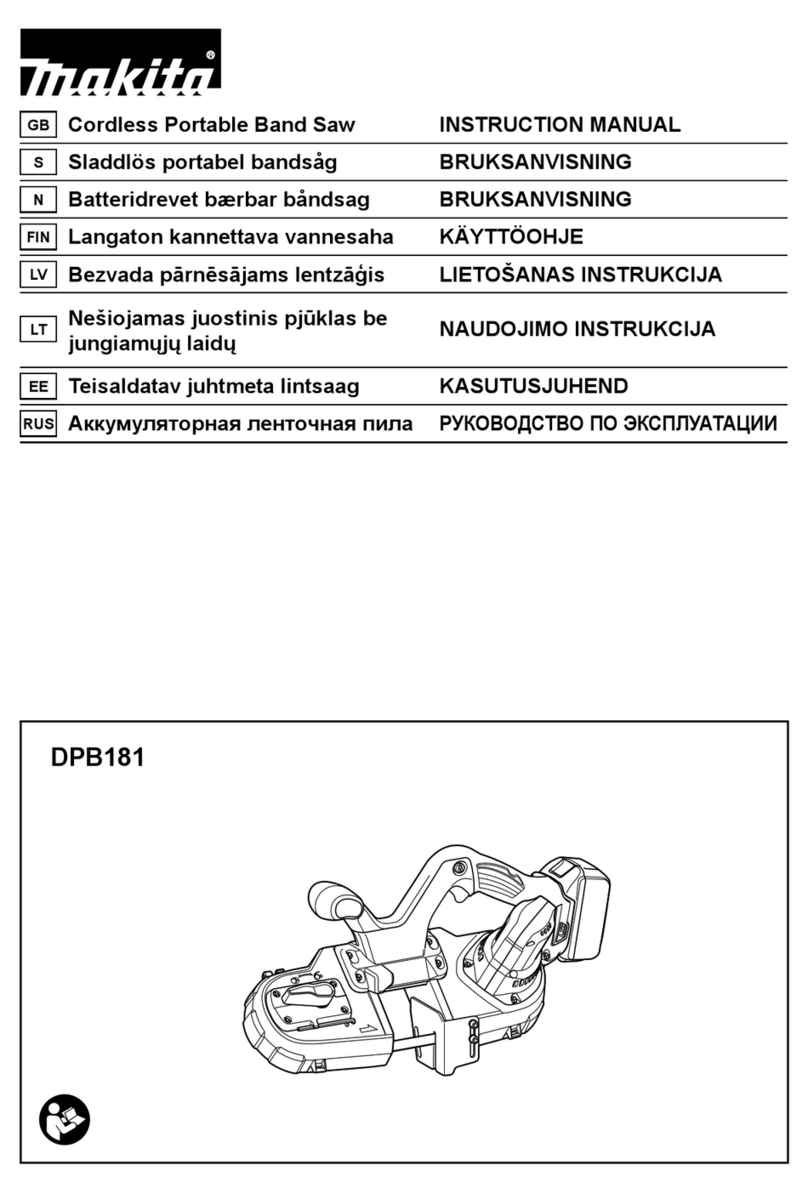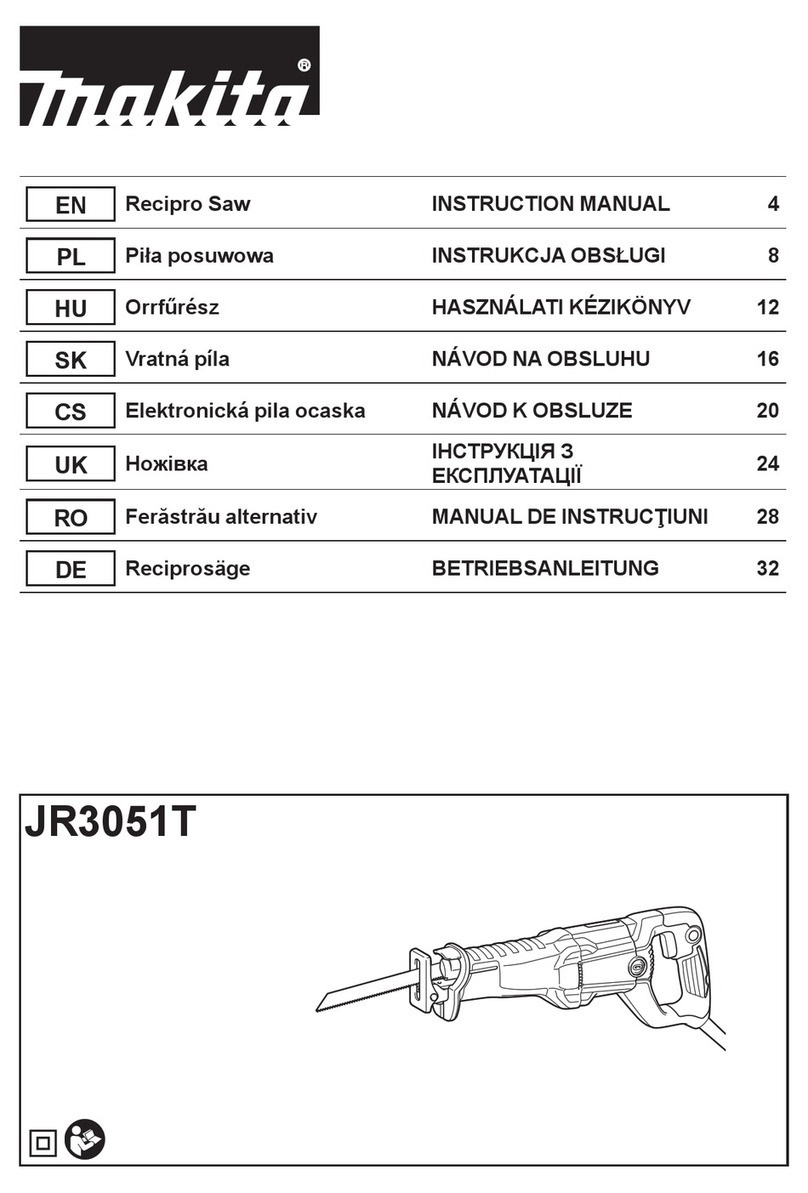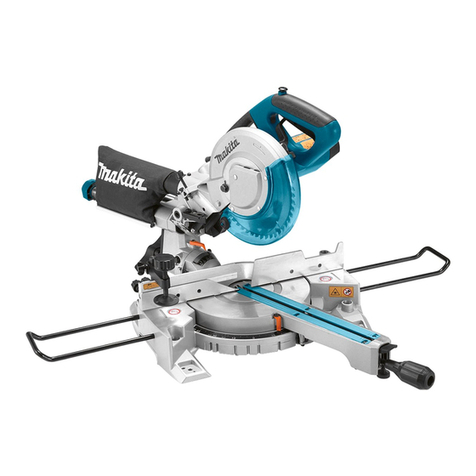
9
parts. This ill ensure that the safety of the po er tool
is maintained.
2. Follow instruction for lubricating and changing
accessories.
CIRCULAR SAW SAFETY
WARNINGS GEB144-3
Cutting procedures
1. DANGER: Keep hands away from cutting area
and the blade. Keep your second hand on
auxiliary handle, or motor housing. If both hands
are holding the sa , they cannot be cut by the blade.
2. Do not reach underneath the workpiece. The guard
cannot protect you from the blade belo the
orkpiece.
3. Adjust the cutting depth to the thickness of the
workpiece. Less than a full tooth of the blade teeth
should be visible belo the orkpiece.
4. Ne er hold the workpiece in your hands or across
your leg while cutting. Secure the workpiece to a
stable platform. It is important to support the ork
properly to minimise body exposure, blade binding, or
loss of control. (Fig. 2)
5. Hold the power tool by insulated gripping
surfaces, when performing an operation where the
cutting tool may contact hidden wiring or its own
cord. Contact ith a “live” ire ill also make exposed
metal parts of the po er tool “live” and could give the
operator an electric shock.
6. When ripping, always use a rip fence or straight
edge guide. This improves the accuracy of cut and
reduces the chance of blade binding.
7. Always use blades with correct size and shape
(diamond ersus round) of arbour holes. Blades
that do not match the mounting hard are of the sa
ill run off-centre, causing loss of control.
8. Ne er use damaged or incorrect blade washers or
bolt. The blade ashers and bolt ere specially
designed for your sa , for optimum performance and
safety of operation.
Kickback causes and related warnings
- kickback is a sudden reaction to a pinched, jammed or
misaligned sa blade, causing an uncontrolled sa to
lift up and out of the orkpiece to ard the operator;
- hen the blade is pinched or jammed tightly by the kerf
closing do n, the blade stalls and the motor reaction
drives the unit rapidly back to ard the operator;
- if the blade becomes t isted or misaligned in the cut,
the teeth at the back edge of the blade can dig into the
top surface of the ood causing the blade to climb out
of the kerf and jump back to ard the operator.
Kickback is the result of sa misuse and/or incorrect
operating procedures or conditions and can be avoided by
taking proper precautions as given belo .
1. Maintain a firm grip with both hands on the saw
and position your arms to resist kickback forces.
Position your body to either side of the blade, but
not in line with the blade. Kickback could cause the
sa to jump back ards, but kickback forces can be
controlled by the operator, if proper precautions are
taken.
2. When blade is binding, or when interrupting a cut
for any reason, release the trigger and hold the
saw motionless in the material until the blade
comes to a complete stop. Ne er attempt to
remo e the saw from the work or pull the saw
backward while the blade is in motion or kickback
may occur. Investigate and take corrective actions to
eliminate the cause of blade binding.
3. When restarting a saw in the workpiece, centre the
saw blade in the kerf so that the saw teeth are not
engaged into the material. If a sa blade binds, it
may alk up or kickback from the orkpiece as the
sa is restarted.
4. Support large panels to minimise the risk of blade
pinching and kickback. Large panels tend to sag
under their o n eight. Supports must be placed
under the panel on both sides, near the line of cut and
near the edge of the panel. (Fig. 3 & 4)
5. Do not use dull or damaged blades.
Unsharpened or improperly set blades produce
narro kerf causing excessive friction, blade binding
and kickback.
6. Blade depth and be el adjusting locking le ers
must be tight and secure before making the cut. If
blade adjustment shifts hile cutting, it may cause
binding and kickback.
7. Use extra caution when sawing into existing walls
or other blind areas. The protruding blade may cut
objects that can cause kickback.
8. ALWAYS hold the tool firmly with both hands.
NEVER place your hand, leg or any part of your
body under the tool base or behind the saw,
especially when making cross-cuts. If kickback
occurs, the sa could easily jump back ards over
your hand, leading to serious personal injury. (Fig. 5)
9. Ne er force the saw. Push the saw forward at a
speed so that the blade cuts without slowing.
Forcing the sa can cause uneven cuts, loss of
accuracy, and possible kickback.
Guard function
1. Check the guard for proper closing before each
use. Do not operate the saw if the guard does not
mo e freely and enclose the blade instantly. Ne er
clamp or tie the guard so that the blade is
exposed. If the sa is accidentally dropped, the guard
may be bent. Check to make sure that guard moves
freely and does not touch the blade or any other part,
in all angles and depths of cut.
2. Check the operation and condition of the guard
return spring. If the guard and the spring are not
operating properly, they must be ser iced before
use. The guard may operate sluggishly due to
damaged parts, gummy deposits, or a build-up of
debris.
3. Assure that the base plate of the saw will not shift
while performing a “plunge cut”. Blade shifting
side ays ill cause binding and likely kick back.
4. Always obser e that the guard is co ering the
blade before placing the saw down on bench or
floor. An unprotected, coasting blade ill cause the
sa to alk back ards, cutting hatever is in its path.
Be a are of the time it takes for the blade to stop after
s itch is released.
Additional safety warnings
1. Use extra caution when cutting damp wood,
pressure treated lumber, or wood containing
